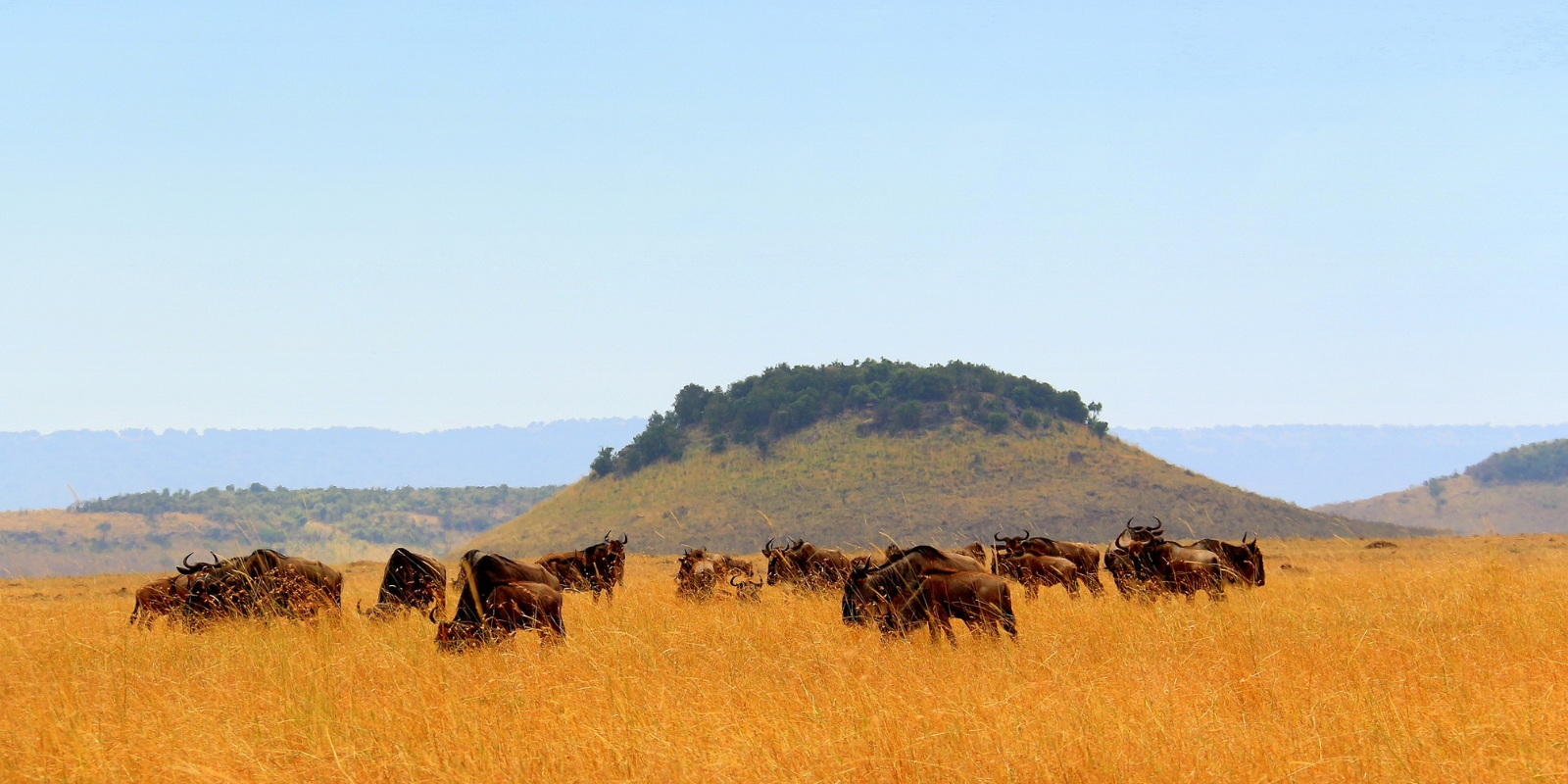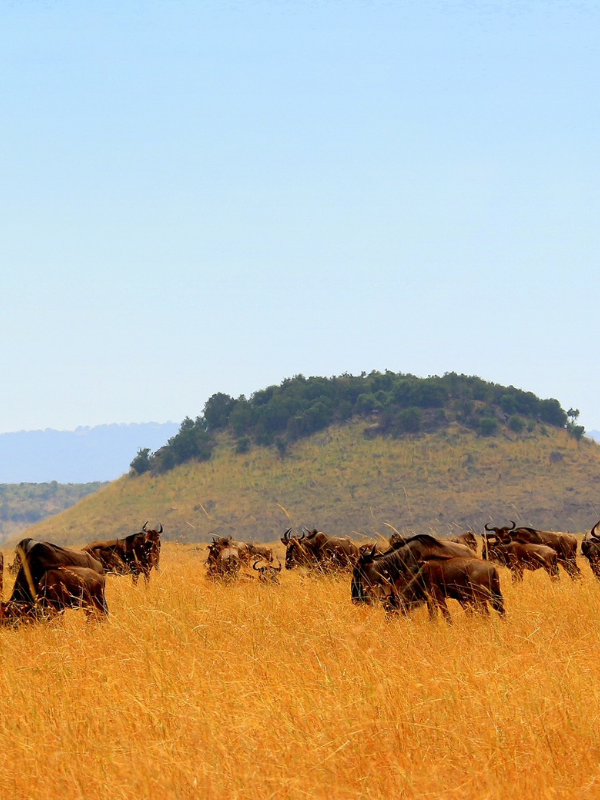

By Subhamoy Das
The Great
Migration: Thundering Symphony of Masai Mara
By Subho Das
The air crackles with anticipation. Dust devils dance above the Masai Mara’s ochre plains, a stark contrast to the emerald ribbon of the Mara River snaking through the landscape. From the vantage point of our open-safari jeep, I grip the camera, my heart hammering a chaotic rhythm. Today’s the grand spectacle: the Great Migration, a primordial ballet where life hangs in the balance.
I’m here to witness one of the most remarkable phenomena of the natural world, one that makes Kenya among the best wildlife destinations on Planet Earth. Every year, more than a million wildebeest and three lakh zebras gather up their young and start their long northward trek of more than a thousand kilometres, from Tanzania’s Serengeti Plains to Kenya’s Masai Mara National Reserve, in search of food and water. It’s an arduous journey in which lakhs of wildebeest and zebras perish.
There they are! A distant murmur transforms into a thunderous roar as a seemingly endless tide of wildebeest surges across the horizon. The sheer number is overwhelming—a million hooves pounding the earth in a relentless march. As the wildebeest stampede closer, their dusty forms come into sharper focus. Their dark beards twitch, nostrils flare, and eyes bulge with a primeval urgency. Flanking them are the zebras, their striped coats standing out starkly against a sea of brown. The once-placid Mara River now churns with a frenzy of activity.
The real drama unfolds at the riverbank. Here, the wildebeest bunch up, their fear palpable. Crocodiles, their reptilian eyes glinting with malice, lurk beneath the murky water. The tension is suffocating. Suddenly, a brave soul plunges in! A lone wildebeest takes the leap, in a desperate gamble for survival. The water explodes in a flurry of hooves and thrashing bodies. My breath catches in my throat as the crocodile lunges, jaws snapping. But the wildebeest, fuelled by pure willpower, manages to scramble up the opposite bank, collapsing in a heap of exhaustion. Relief washes over me, a relief as intense as the earlier fear.
The crossing continues for what feels like an eternity. Some wildebeest make it with ease, others fall prey to the crocs, their struggles a sobering reminder of the circle of life. But the utter determination of these creatures, their will to survive unwavering, is awe-inspiring. The Great Migration is more than just a spectacle; it’s a testament to the resilience of nature, a story of survival etched in dust and hooves.
This spectacle is not just a wildlife documentary. It’s a primal experience, a witness to the delicate interplay between life and death that governs our planet. As I leave the riverbank, the setting sun casting long shadows across the savannah, I carry within me the memory of this incredible dance of life and the indefatigable spirit of a million beasts.
Travel Tips
· Best time to visit Kenya to
witness the Great Migration is from July to October, when the wildebeest are
concentrated in the Masai Mara
· Nairobi is the main gateway
to the Masai Mara. Numerous tour operators offer day trips or multi-day safaris
to the reserve
· The journey from Nairobi to
Masai Mara can be done by road (approx. 6 hours) or air (one hour)
· Accommodation options
available within the reserve range from budget campsites to luxurious lodges